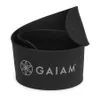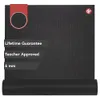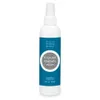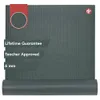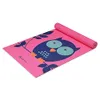The 8 best core workouts to build stronger abs and boost your balance without weights

The best core workouts strengthen this mid-body muscle, helping improve your posture, reduce the risk of injury, and develop the connection between your upper and lower body.
Your core refers to the central part of your body, and it plays a vital role in helping you go about your day-to-day. Be it getting up out of bed, sitting properly at your desk, or picking up a pair of dumbbells. It’s composed of multiple muscles that work hard behind the scenes to support and stabilize your body.
Functional benefits aside, many people roll out a yoga mat and crunch, sit-up, or plank their way to a more toned stomach. But remember: no amount of Russian twists alone will help you gain a six-pack, as you'll need to pair core workouts with high-intensity training and a balanced diet.
But to help you develop mid-body muscle, we've consulted personal trainers and compiled an expert-backed guide on the best core workouts you can do at home or the gym, with no equipment required.
Best core workouts: 8 muscle-building moves to try
To help you reap these rewards, Martin Sharp, personal trainer, multi-award-winning fitness & lifestyle coach, and founder of Sharp Fit For Life, has shared a core workout, complete with three sets.
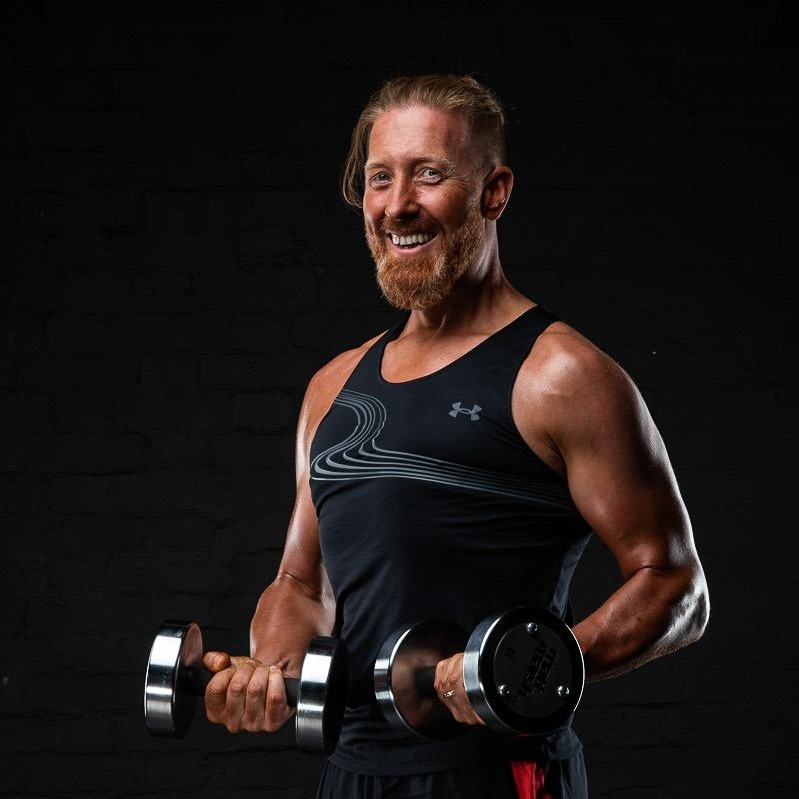
Martin Sharp is a qualified Level 3 Personal Trainer who spends his days helping busy entrepreneurs, consultants, and business owners obtain the fitness and lifestyle goals that make them happier, more confident, and with the flexibility to continue to be at their best. He has featured in Woman & Home, Yahoo Sports, the BBC, and the Telegraph.
Although you can program these exercises however you wish, even adding them into your existing routine, Sharp suggests aiming to complete 10 reps in the first set, 12 reps in the second, and continue to perform reps until failure in the third set.
“Remember that your mind gives in a lot sooner than your body does,” Sharp adds. “So push yourself.” Try to breathe through each exercise and focus on your form. And, as is the case with all exercise, if it causes pain, stop and seek professional guidance.
Get instant access to breaking news, the hottest reviews, great deals and helpful tips.
1. Russian twists
Muscle targeted: Obliques
Synergistic muscles: Iliopsoas
How:
- Sit on the floor with your legs in front of you.
- Hold your arms up at shoulder height and your hands towards your chest. Rotate your upper body to the right, then return to the center before you rotate to the left.
Tips:
- Raise your feet off the ground to elevate your legs, increasing the workout effort.
- Challenge yourself to see how far around you can rotate.
- To increase the intensity, hold a dumbbell with both hands and move that to each side as you rotate.
2. Crunches
Muscle targeted: Rectus abdominis
Synergistic muscles: Obliques
How:
- Lie flat on your back (supine) on the floor with the knees bent and the feet flat.
- Place your fingers at the side of the ears or across your chest.
- Engage your abdominals to curl your torso towards your knees, lifting the shoulder blades off the ground.
- Remember to bend at your trunk, not your hips. Keep your hips on the floor, and your head in a neutral position.
- Hold the curled position and contract the abdominal muscles for 2 seconds.
- Then, lower down under control slowly returning to the starting position.
Tips:
- You can extend your arms straight out to require more effort when performing this exercise.
3. Deadbugs
Muscle targeted: Rectus abdominis
Synergistic muscles: Gluteus maximus, quadriceps
How:
- Lie flat on your back (supine) on an exercise mat with your arms and legs straight up in the air.
- Engage your abdominal muscles and maintain a neutral spine, then extend one leg slowly with the opposite arm overhead.
- Pause, then return to start and alternate arms and legs.
4. Mountain climbers
Muscles targeted: Iliopsoas, rectus abdominis
Synergistic muscles: Gluteus maximus, obliques, quadriceps
How:
- Start in a high plank or press-up position, with your shoulders over your wrists and your core engaged so your body forms a straight line from shoulders down your back to hips to heels.
- Drive your right knee between your elbow toward your chest, then quickly step back to the plank position.
- Immediately drive the left knee between your elbows toward the chest, then quickly step back into the plank position. Repeat.
Tips:
- Keep your body as still as possible while your legs move by keeping your core under tension. Still struggling with this move? Read our detailed guide on how to do mountain climbers.
5. Spiderman plank
Muscles targeted: Iliopsoas, rectus abdominis
Synergistic muscles: Gluteus maximus, obliques, quadriceps
How:
- Start in a high plank or press-up position with your shoulders over your wrists, and your core engaged so your body forms a straight line from shoulders down your back to hips to heels.
- Engage your glutes and thighs to help keep your legs straight.
- Drive your right knee to the outside of your right elbow, then quickly step back to the plank position.
- Immediately drive the left knee to the outside of your left elbow, then quickly step back into the plank position. Repeat for process for the desired time.
Tips:
- Keep your body as still as possible while your legs move by keeping your core under tension.
6. Plank
Muscle targeted: Rectus abdominis
Synergistic muscles: Deltoid anterior, gluteus maximus, gluteus medius, obliques, sartorius, tensor fasciae Latae
How:
- Position yourself on your elbows and toes with your hips in alignment with your shoulders and your core engaged so your body forms a straight line from shoulders down your back to hips to heels.
- Tighten your abdominal muscles and hold that position for the desired time.
Tips:
- If you feel any strain in your back, lift your hips higher or relax for three seconds, check your technique, and try again.
- If this is too difficult, try the modified version, a box plank, by placing your knees on the ground. Or check out our expert-backed guide on how to do a plank.
7. Lying leg raises
Muscle targeted: Rectus abdominis
Synergistic muscles: Gluteus maximus, iliopsoas, quadriceps, sartorius, tensor fasciae latae
How:
- Lay on your back with your hands by your sides for support.
- Raise your legs off the ground, keeping your abdominals and core tight.
- Slowly raise your legs 90 degrees by squeezing your abdominal muscles.
- Slowly return to the starting position under control.
- Do not touch the floor with your feet.
Tips:
- Keep your back flat on the floor during this exercise.
- If you experience lower back discomfort, discontinue this exercise.
- Challenge yourself to see how far you can get your feet over your head.
8. Seated leg tucks
Muscles targeted: Iliopsoas, rectus abdominis
Synergistic muscles: Gluteus maximus, obliques, quadriceps
How:
- Sit on the floor or edge of a bench, balancing with your legs elevated in front of you. Use your hands for support (if needed) and keep your back flat and upright.
- Bring your knees to your chest.
- Hold the contraction for two seconds, then slowly return to the starting position and repeat.
Tips:
- Avoid doing this exercise if you suffer from lower back pain.
Benefits of the best core workouts
Whether you prefer bodyweight core exercises or weighted alternatives, the benefits of training your core trickle into most aspects of everyday life. Doing so can improve pulmonary function (how well your lungs work) and even promote better functional movement (the kind of daily moves you make without thinking).
“A strong core helps support the spine and pelvis, promoting better alignment and reducing the risk of poor posture-related issues such as back pain and rounded shoulders,” certified personal trainer Amanda Place, founder of Sculptrition, explains.
“Core strengthening exercises can also help alleviate and prevent lower back pain by providing support to the spine and improving spinal alignment and stability.”
So, along with your pelvic floor muscles and diaphragm, your major trunk muscles include your rectus abdominis, transverse abdominis, internal & external obliques, erector spinae, multifidus, and quadratus lumborum. Therefore, the top core exercises tend to target one (or more) of these muscles.
According to the Orthopedic Online Research Journal, carving out a stronger mid-region can also help enhance stability and balance which, research published in the Physical Therapy of Sport journal concluded, can lessen the risk of lower-body injury.
Plus, whether you’re training to become an athlete or not, one research paper published in the Behavioral Sciences journal found that core training can have a ‘large effect’ on general athletic performance.
Better yet, you don’t need to sweat it out for hours on your mat all day, every day to see and feel the rewards. According to the Physical Activity Guidelines for Americans, you should aim for two strength-training sessions (like core workouts) a week.
More from Tom’s Guide
- The best cross-training shoes — tried and tested
- I did 100 heel touches a day for a week — here’s my results
- Forget sit-ups — this abs workout builds core strength without weights in just 10 minutes
Becks is a lifestyle journalist who specializes in writing about wellness and home products, from mattresses to weighted blankets and cooling comforters. She has tested a number of mattresses for Tom's Guide, putting them through their paces to see if they stand up to the brand's claims, and offering recommendations as to the type of sleeper they will (and won't) suit.

